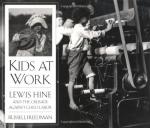|
This section contains 1,558 words (approx. 6 pages at 300 words per page) |

|
Julie V. Iovine
About the author: Julie V. Iovine is a writer for the New York Times News Service.
Several carpet importers and manufacturers have responded to governmental and consumer aversion to child labor by participating in programs intended to assure customers that their rugs were made without child labor. These programs use inspectors to monitor the production of rugs and affix labels to carpets made by participating manufacturers. Such tactics may be ineffective, however. Labeling programs often have too few inspectors to monitor an entire domain of carpet production, and it is possible that these inspectors are bribed to lie about the use of child labor. Furthermore, rug weaving is often a necessary family enterprise that contributes to the economy of developing nations. Rather than banning the use of child labor...
|
This section contains 1,558 words (approx. 6 pages at 300 words per page) |

|




